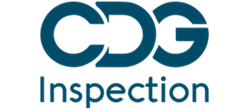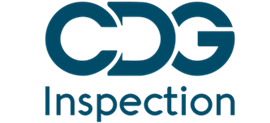Introduction:
In an era marked by rapid technological advancements, the life sciences and pharmaceutical industry finds itself at the intersection of innovation and regulation. Companies in this sector must navigate stringent quality standards and compliance requirements to ensure the safety and efficacy of their products. One such critical regulatory framework is the European Union’s Good Manufacturing Practice (EU GMP) guidelines, which set the benchmark for quality assurance in the production of pharmaceuticals, biologics, and medical devices.
This article explores the evolving landscape of EU GMP certification compliance and how technology, exemplified by the fictional company CDG Inspection Limited, plays a pivotal role in meeting these demanding standards. With a particular focus on technology’s integration into various aspects of manufacturing and quality control, we delve into how CDG Inspection Limited leverages cutting-edge solutions to achieve and maintain EU GMP certification.
Understanding EU GMP Certification
EU GMP certification is a testament to a pharmaceutical or biotech company’s commitment to producing safe and effective medicines. It is an essential requirement for marketing and selling pharmaceutical products within the European Union. To obtain and sustain EU GMP certification, companies must adhere to a comprehensive set of quality standards and protocols that encompass every aspect of drug manufacturing and distribution. These standards cover areas such as facilities, equipment, personnel, documentation, quality control, and validation processes.
The Role of Technology in EU GMP Certification Compliance
The traditional approach to compliance involved extensive paperwork, manual documentation, and a significant reliance on human oversight. However, the dynamic and evolving nature of the life sciences industry necessitates a shift toward technology-driven solutions that can provide real-time data, enhanced traceability, and improved accuracy.
1. Advanced Equipment and Automation
CDG Inspection Limited recognizes that investing in advanced equipment and automation systems is fundamental to achieving and maintaining EU GMP certification. In a manufacturing environment, technology-driven equipment offers precise control over processes, reduces human errors, and ensures consistent product quality. For example, automated filling and packaging machines equipped with sensors can detect deviations in product weight, ensuring that every unit meets the required specifications.
2. Data Integrity and Real-time Monitoring
Ensuring data integrity is paramount in EU GMP compliance. CDG Inspection Limited utilizes state-of-the-art data management systems that integrate with various manufacturing processes. These systems capture and store data in real time, making it accessible for review and audit at any moment. The implementation of electronic batch records (EBRs) minimizes the risk of data tampering and enhances transparency.
3. Quality Control and Testing
Modern technology plays a pivotal role in quality control and testing procedures. CDG Inspection Limited employs advanced analytical instruments and software to validate the quality of raw materials, intermediates, and finished products. High-performance liquid chromatography (HPLC), mass spectrometry, and other sophisticated techniques provide accurate results swiftly, reducing the time required for quality assessment.
4. Personnel Training and Compliance
The training and compliance of personnel are essential aspects of EU GMP certification. CDG Inspection Limited utilizes e-learning platforms and virtual reality (VR) simulations to train employees on GMP principles, hygiene practices, and safety protocols. These interactive tools ensure that the workforce is well-prepared and compliant with the latest regulations.
5. Supply Chain and Serialization
Managing the pharmaceutical supply chain is a complex task with stringent EU GMP requirements. CDG Inspection Limited employs cutting-edge serialization and track-and-trace technologies to ensure product authenticity, prevent counterfeiting, and maintain traceability throughout the supply chain. This is particularly crucial in the fight against counterfeit drugs.
6. Regulatory Reporting and Documentation
Streamlining regulatory reporting and documentation is a key challenge for GMP compliance. CDG Inspection Limited utilizes electronic document management systems (EDMS) and regulatory information management (RIM) software to simplify the preparation of regulatory submissions. These systems provide version control, audit trails, and templates for various documentation requirements.
7. Auditing and Inspections
Preparing for regulatory audits and inspections is a critical aspect of EU GMP certification. CDG Inspection Limited employs audit management software that enables efficient audit planning, execution, and follow-up. This technology-driven approach ensures that the company is always audit-ready and can promptly address any identified deficiencies.
Challenges and Considerations
While technology offers numerous benefits in achieving EU GMP certification compliance, it also presents challenges that must be addressed. These challenges include data security, the cost of technology implementation, the need for ongoing training, and the potential for technical issues that could disrupt manufacturing processes.
Additionally, regulatory agencies continuously update GMP guidelines, requiring companies like CDG Inspection Limited to stay current with evolving technology and compliance standards.
Conclusion:
The story of CDG Inspection Limited illustrates the transformative power of technology in achieving and maintaining EU GMP certification compliance. Through the integration of advanced equipment, data management systems, personnel training tools, and supply chain solutions, CDG Inspection Limited not only meets regulatory standards but also elevates its operations to ensure the highest level of product quality and patient safety.
As the life sciences industry continues to evolve, companies must embrace technology-driven approaches to GMP compliance to remain competitive and demonstrate their unwavering commitment to product excellence. The synergy between technology and EU GMP certification is not merely a requirement but a strategic advantage that positions companies like CDG Inspection Limited for long-term success in the pharmaceutical landscape.
In the ever-changing world of pharmaceutical manufacturing, the role of technology in EU GMP certification compliance is not just a trend; it’s a necessity that paves the way for a future of safer, more efficient, and more innovative healthcare products for patients across the European Union and beyond.






Can you be more specific about the content of your article? After reading it, I still have some doubts. Hope you can help me.
Your article helped me a lot, is there any more related content? Thanks!